Bird’s Eye View







This year, the EU passed laws to target greenwashing. These laws aim to regulate the claims and statements that brands place on their labels, especially environmental claims that are not substantiated by proof. From a consumer perspective this is a step forward.
Unfortunately, this legislation cannot address all forms of greenwashing, especially the subtler tactics. This is where the role of media manipulation is even less apparent. Certain lobbies, including speculators, hunters and trappers, tobacco companies and fossil fuel companies, use various forms of greenwashing to normalise their actions, which consumers need to be aware of.
For example, after organising a clean-up, a company or a lobby will brag about how much they care for the environment, even if they do the complete opposite all year round. When hunters talk about how they care for preserving the Maltese hunting dog breed and organise awards in collaboration with the Ministry for Animal Welfare, they push the illusion
that they love animals. But of course, a hunter or trapper stating that he loves animals is the perfect oxymoron.
Similarly, publishing a book with recipes for eating birds that have been shot or trapped is another way of trying to normalise violence. In other European countries these actions would be addressed to the extreme right faction, but Malta is not a normal European country, and neither are our politicians.
Such actions are a smokescreen, part of a playbook that "dirty" lobbies use over and over. No book, clean-up or pet awards will change what hunting and trapping in Malta stand for: the wanton killing of protected birds, the only hunters in Europe who kill birds in spring, the destruction of garrigue habitat for illegal trapping – I can go on.
No amount of greenwashing will remove the blood!
Darryl Grima President
The culprits in this list were brought to justice after being observed and reported by BirdLife Malta.
Jul 2024: CRIME: Trapping during close season + trapping for Tree Pipit, a protected species (March 2023 Żurrieq). PUNISHMENT: Trapper fined €1200 + suspension of trapping licence for 2 yrs.
Jul 2024: CRIME: Trapping during close season + trapping on unregistered site. (October 2023 Rabat). PUNISHMENT: Trapper fined €900 + suspension of trapping licence for 3 yrs.
Jul 2024: CRIME: Trapping on an unregistered site (October 2022 Marsaskala). PUNISHMENT: Trapper fined €1200 + suspension of trapping licence for 3 yrs.
The Maltese Islands attract several heron species during migration. One of the scarcer visitors (certainly one of the largest) is the Great White Egret, which however seems to be occurring more regularly in recent years. If they’re tired and hungry they alight somewhere along the coast – including BirdLife’s three wetlands – to rest and to snack on fish or shrimp from the shallow water. In early September two such beauties graced the saltpans at Salina nature reserve for a few days.

Editorial Board Editorial Board Nathaniel Attard (Editor), Victor Falzon (Naturalist & Field Teacher), Cinzia Mintoff (Graphic Design & Digital Media Communication Officer), Khouloud Belhadj (Communication Assistant), Yusuf Gamal (Photography and Film Production Assistant), Nastasya Koroleva (Volunteers & Events Coordinator).
BirdLife Malta Council Darryl Grima (President), Caldon Mercieca (Vice-President), Norman Chetcuti (Treasurer), Denise Casolani (Council Secretary), James Aquilina, Miriam Camilleri, Eurydike Kovacs, Paul Portelli, Kathleen Psaila Galea, Raphael Soler, Steve Zammit Lupi (members)
Senior Management Team Mark Sultana (CEO), Nicholas Barbara (Head of Conservation), Mark Gauci (Head of Land Management), Stefania Papadopol (Education Manager), Nathaniel Attard (Communications Manager), Gabriella Seguna Galea (Finance Manager), Manuel Mallia (Salina Park Manager), Manya Russo (LIFE PanPuffinus! Project Manager), Janet Borg (Office Coordinator)
Design Cinzia Mintoff
Printed at Poultons on sustainably sourced paper
Front cover photo Western Yellow Wagtail by Aron Tanti Reg. Vol. Org. VO/0052 © 2024 BirdLife Malta. All rights reserved.
Contact BirdLife Malta
mailing address: 57/28 Abate Rigord Street, Ta’ Xbiex XBX 1120, Malta tel: +356 21347645 • email: info@birdlifemalta.org • website: www.birdlifemalta.org

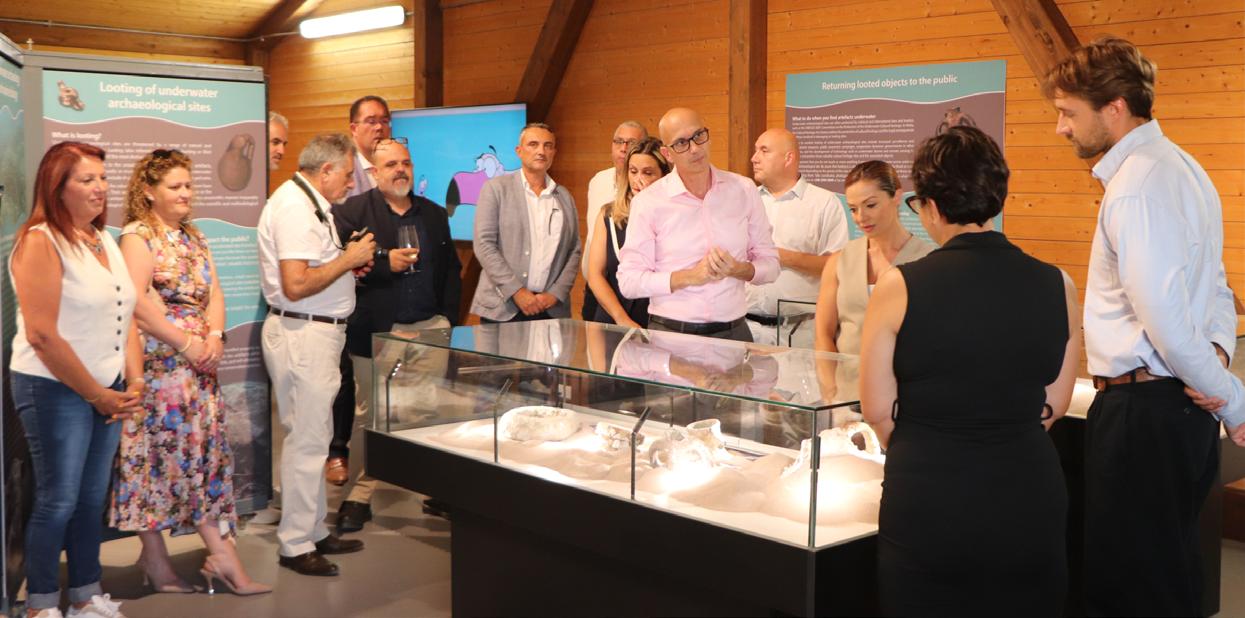
Malta’s first salt museum was inaugurated at Salina on 26 July with a family-oriented Festa Melħ on 27–28 July. The museum deals with the history and tradition of salt production in Malta, with special focus on the Salina saltworks established by the Knights of St John in the 16th century. The Salt Museum initiative is a collaboration between ERA, BirdLife Malta and Ambjent Malta, with a €100,000 investment from the Gal Majjistral Foundation under the LEADER programme. The Museum will open to visitors on Wednesdays [summer (until 15 Sep) 8am–12pm; winter (8am–3pm)].
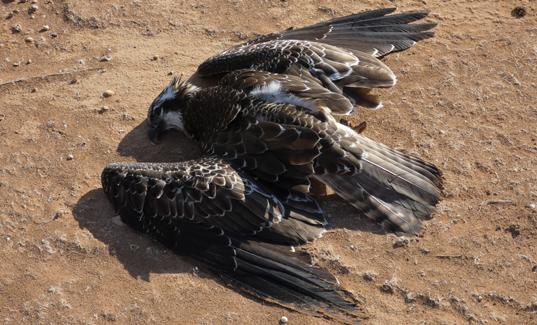
The annual autumn hunting season in Malta runs from 1 Sep to 31 Jan. Hunting in autumn is permitted for 40 species from land and 12 species at sea. Please report hunting illegalities to the police on 119 (ask to be put through to the EPU).

The Court of Appeal rejected a joint ENGOs' appeal against the Comino Hotel redevelopment on Kemmuna approved by ERA. Seven environmental organisations, including BirdLife Malta, pledged to continue opposing Hili Group's proposed urban village on the Natura 2000 site and will challenge the application before the Planning Authority and other fora.
The Court of Appeal has recently revoked permits for several developments due to planning law breaches, including swimming pools in Qala ODZ, projects in Sannat, Xewkija, and a Mellieħa hotel. These structures, however, remain intact as they were built before the revocations. Meanwhile, other large-scale development has begun despite ongoing appeals. Despite Prime Minister Robert Abela’s promise to amend the law to prevent execution of development permits until appeals are decided, no reforms have been made. BirdLife Malta and 13 other ENGOs are urging immediate reform of the flawed planning appeals system.


The Environment & Resources Authority (ERA) has again shown it is toothless, accepting changes to the Environment Protection Act to allow the use of fireworks near protected trees. The new legal notice was enacted without consultation and now allows fireworks to be set off within 20m of protected areas. Several environmental organisations endorsed a joint statement calling for an immediate repeal of the law and for proper public consultation.

Mosta Local Council recently decided against pedestrianising Pjazza Rotunda at designated times. The original initiative would have enhance quality of life, reduced pollution and created peaceful green spaces. BirdLife Malta, which had already successfully advocated against tree removal from the square, criticised the new PN-led council for reversing the plan in favour of constant vehicle access. This move reflects poor planning and prioritises short-term convenience over long-term community and environmental benefits. The organisation for the kind of leadership that prioritises open spaces and sustainable transport solutions for the benefit of residents and nature.

In July, BirdLife Malta and eight other organisations strongly condemned the government's attempt to amend the Ħal Far Local Plan to permit the construction of an airstrip for model aircraft in Wied Żnuber. This plan, secretly agreed upon in Feb 2022 between three government agencies and the Ħal Far Model Flying Association, would allocate 17,000m2 of public land for the airstrip. This development would consume natural land, increase noise and light pollution, and threaten the nearby Natura 2000 site, including a shearwater colony. During the second phase of public consultation, the Birżebbuġa Local Council and Għaqda Storja u Kultura Birżebbuġa gathered over 1000 objections.
BirdLife Malta was alarmed by the proposal to build a nightclub near Armier, right next to crucial seabird habitat such as L-Irdum tal-Madonna Natura 2000 site. The Planning Board was requested to enforce limits on light and noise pollution due to ERA's oversight. Despite this, the kiosk renovations proceeded, leading to an enforcement investigation. The development is in a Special Protection Area for seabirds, including Yelkouan Shearwater, which are vulnerable to light and noise pollution. Preserving the area from such disturbances is crucial for the survival of the seabird colonies.
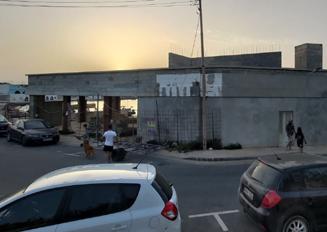
WORDS Khouloud Belhadj BirdLife Malta Communication Assistant
The summer Nature Guardians course started on 9 July, with 15 enthusiastic children diving into exploration at Salina. Participants have engaged in creating their own nature reserves, enjoyed a treasure hunt, celebrated birthdays and conducted soil tests. Upcoming sessions promise further excitement, including field trips to interesting locations, hands-on experiments and nature-themed crafts. Children interested in joining the adventure can secure a place in the autumn course and become part of a growing community of youths focused on environmental exploration and protection.
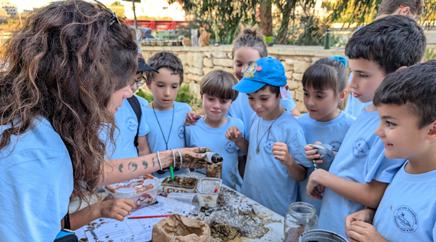
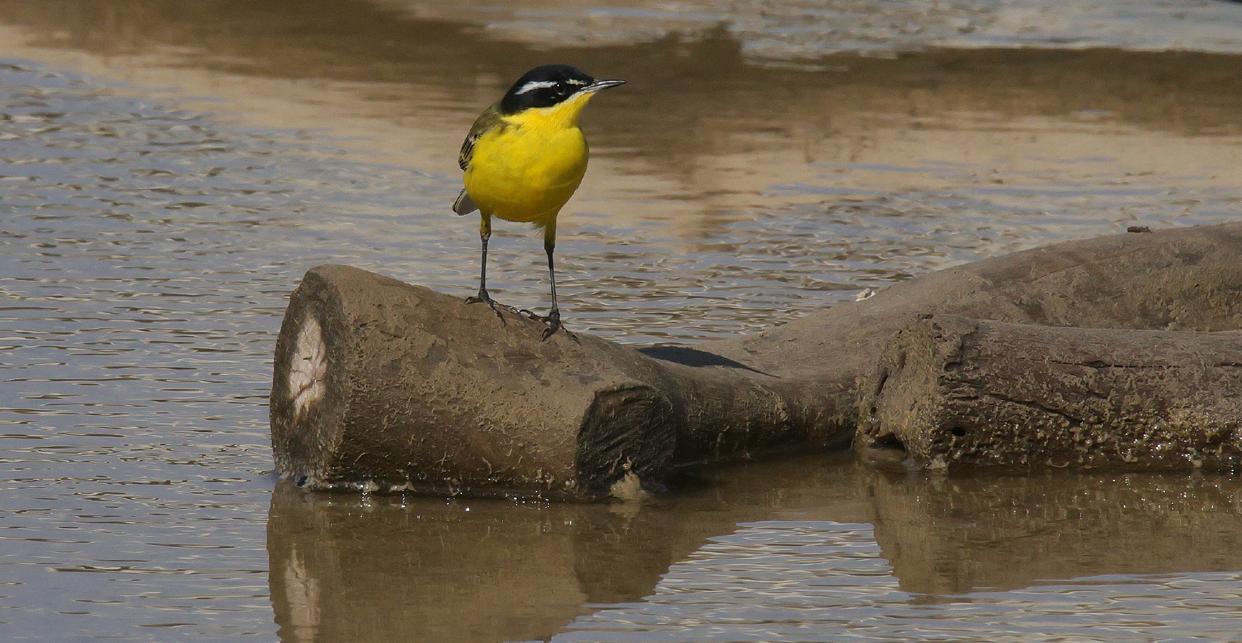
This species was until recently known simply as Yellow Wagtail, and it included the world’s population, with 17 subspecies. In recent years, however, the species was divided into two separate species: Western Yellow Wagtail Motacilla flava and Eastern Yellow Wagtail Motacilla tschutschensis. The Western Yellow Wagtail has 10–12 recognised subspecies, which vary mainly in the colour and head pattern of breeding males. The nominate race (Motacilla flava flava), which breeds in the greater part of Continental Europe, has a blue-grey head with a prominent white supercilium and white submoustachial stripe. Upperparts are greenish/olive brown while underparts, chin and throat are bright yellow. Bill is dark grey to black, eyes dark brown and legs and feet blackish. Females have a duller head pattern with less yellow underparts especially chin and throat, with buffish breast.
Western Yellow Wagtails have a very large breeding range, extending from Europe, east through Siberia to western Asia and northwestern China. The European breeding population is estimated at 13,300,000–18,000,000 pairs but the population is estimated to be decreasing by 6% every 10 years. It is almost totally migratory, with European populations wintering in sub-Saharan Africa.
MALTESE NAME: Isfar
SCIENTIFIC NAME: Motacilla flava
LENGTH: 15–16 cm
WING SPAN: 75–89 cm
The Western Yellow Wagtail feeds on small aquatic and terrestrial invertebrates, but also plant material, particularly seeds. It forages by picking food while walking on ground or in shallow water, sometimes performing short flights to catch prey, and often hovers over vegetation.
In Malta the species is seen on migration from late March to late April, with fewer numbers in May, with one or two occasionally in June and July. The highest numbers during spring migration tend to occur in adverse weather conditions. In autumn most birds migrate from late August to mid-October, then trickling to late October. During migration, birds are mostly seen in flight with their characteristic undulating flight and the pseet flight call. They normally migrate in flocks and at dusk large numbers often roost in deep valleys or open habitats with low vegetation, such as airfields. By day, they are often observed feeding mainly in open farmland and near water courses. Some of the best sites to observe the various races of Western Yellow Wagtail are BirdLife Malta’s nature reserves. The races most encountered in Malta are flava, feldegg and thunbergi
IUCN CONSERVATION STATUS: Least Concern with Decreasing Population trend (IUCN 2020)
LOCAL STATUS: Common in spring and autumn migration
CALL: Some variations in call intensity of various races but in much of Europe it’s a fine psit or pseet in flight. Southern populations have slightly louder calls while the feldegg race in parts of Eastern Europe has a more grating zrrie.
SONG: Repetition of call interspersed with warbling scraping notes.
BEHAVIOUR: Forages on ground or shallow water, flicking tail up and down. Gregarious on migration.
HABITAT: Breeds in damp grasslands, water meadows and fringes of freshwater marshes and lakes. Outside breeding season occurs in similar habitats and in various open grassy or waterside areas.


Opening hours
Nature Reserve: Daily 7am–6pm
Visitor Centre: Mon–Fri 8am–2pm Entrance free (donations welcome!)
More info at http://bit.ly/SalinaNatureReserve

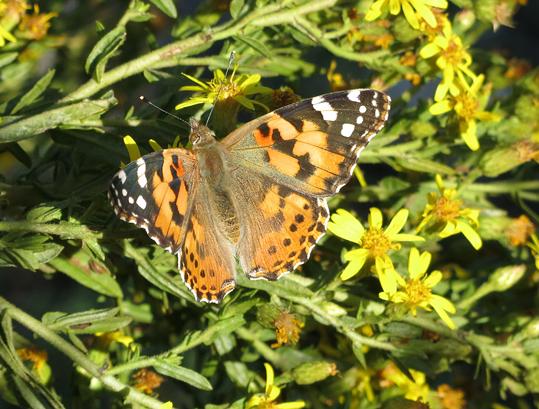
Pispisella tad-Dabra Calidris alpina
The dunlin is one of our smaller waders. Waders are a large family of birds, most of which live along the waterline, hence their collective name. For these birds, life is literally a beach but it’s not easy. Shores are very exposed habitats with very little shelter from weather or predators. To escape attention waders are often dull coloured, and the dunlin is no exception. Small and with few colours to speak of (even drabber in winter) they skulk around on sandy or muddy shores looking for food. Dunlins have a typical wader bill: long, thin and tapering, very useful for probing the wet mud for worms and other invertebrates. Dunlins breed way up north and we see them only on migration to and from Africa. A scatter of them often turn up in places like the wetlands at Għadira and Salina, to spend a few days in the relative safety of these protected sites.
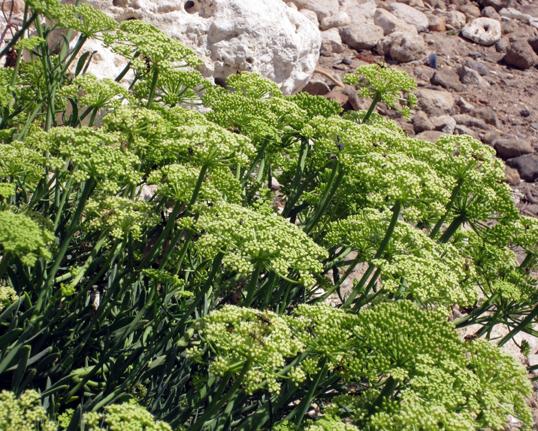
Farfett tax-Xewk Vanessa cardui
For all their myriad adaptations, insects don’t survive cold weather very well, so it’s no surprise that many die off before winter appears. Butterflies hurry up with the business of laying to ensure their species’s survival, and the Painted Lady is no exception. It drinks its fill from various autumn flowers, then hunts carefully for the right species on which to deposit its precious eggs. You see, butterfly young are picky in their palate and not just any plant will do. In the Painted Lady’s case it’s mostly thistle species (hence its Maltese name), and as soon as they hatch the larvae start tucking into the leaves. For most people thistles are useless weeds, but not for the people who manage Salina and our other nature reserves. Wild flowers are of critical importance for butterfly larvae if they are to grow, pupate and emerge all ready to start a new generation.

Bużbież il-Baħar Crithmum maritimum
The sea samphire is a common coastal shrub, growing even at popular beaches where it proliferates thickly on the sandy or stony slopes – and it’s present at Salina too, growing even along the footpaths. Like other species in the carrot family, the sea samphire grows its flowers in large disc- or ball-shaped flowerheads. The sea samphire’s flowers – it’s still in flower in places – are nor particularly eye-catching, being a pale greenish yellow; but they must smell very nice as many insects drop in for a nectar hit. The sea samphire’s forte is its ability to survive regular bashings of sea spray, sandblasting winds that would corrode the most robust metalware, scorching summer sun, many months of drought and blistering hot sand. You must hand it to these plants: compared with them we humans are a bunch of sheltered wimps. Move over, Bear Grylls!
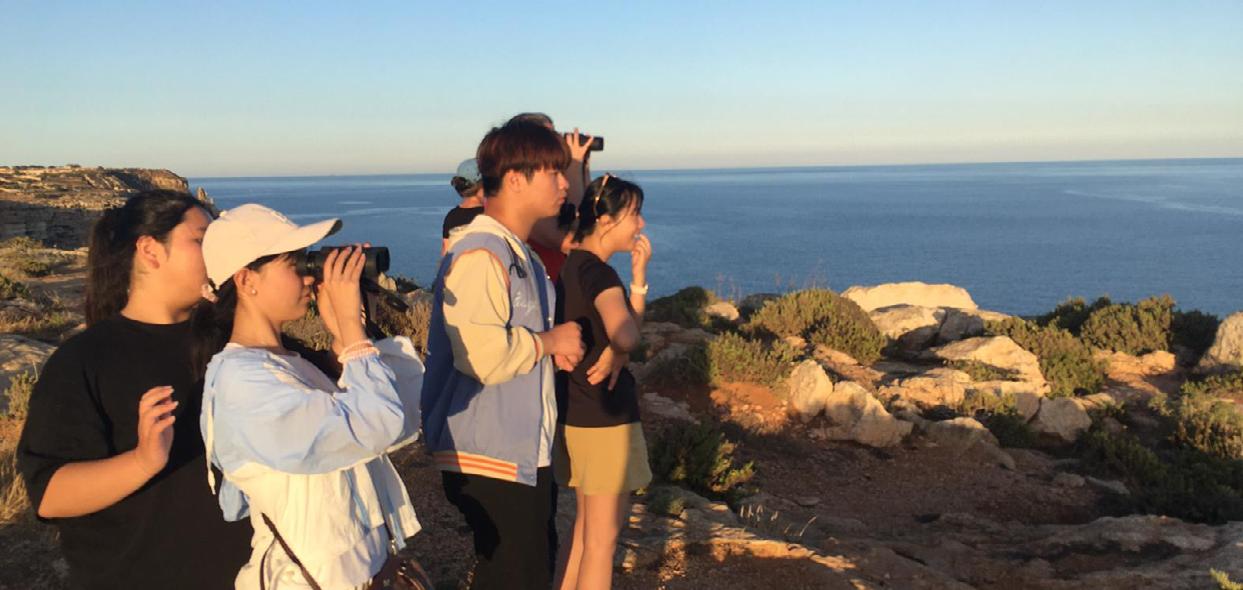
One of BirdLife Malta’s current projects is the EU-funded LIFE PanPuffinus! which aims to improve the conservation status of the Yelkouan Shearwater and the Balearic Shearwater by tackling threats both on land and at sea. As information is power and spreading awareness is fundamental to building a sustainable society, part of the project involves many events that engage with diverse audiences. These include seabird boat trips, clean ups, colony walks, stands, school talks and exhibitions. Let’s take a closer look at how each event spreads awareness.
Nothing teaches better than getting your hands dirty! To spread awareness about seabirds and the threats they face, BirdLife Malta organises many outdoors activities for different audiences. Our popular annual seabird boat trips are a favourite, engaging over 100 persons every year. General public and tourists get the chance to observe and enjoy shearwaters in their habitat. These seabirds gather in large groups and rest on the water (known as rafting) as they wait for nightfall to return to their nests a unique opportunity for participants to learn about their ecology and the importance of protected areas.

On land, clean-ups and colony walks bring together people of Increasing awareness through speech and sight

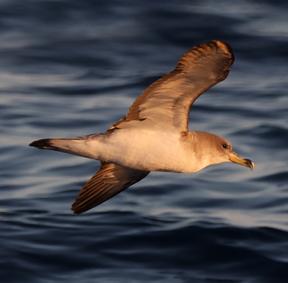
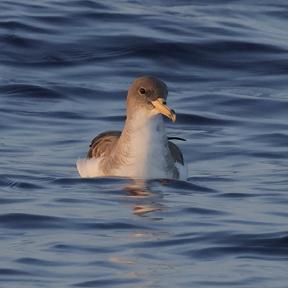
to schools, we used games to talk to students about the Malta’s seabirds, their biology, the threats they face, the importance of Malta itself as their home, and the need to protect them. To reach a wider audience we also set up stalls at fairs and other public events. Here we were able to explain more about LIFE PanPuffinus! and discuss the current situation of seabirds in our country.
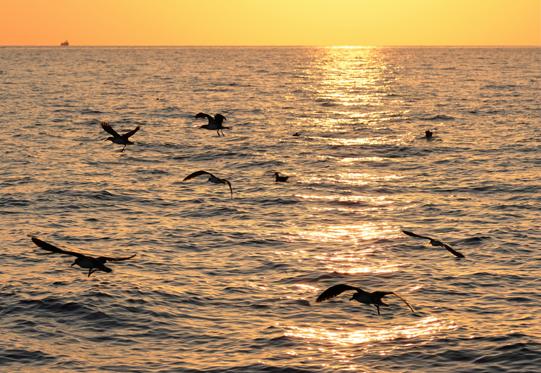
Lastly, but equally important, we used exhibitions to broadly showcase the world of seabirds, their challenges and their conservation. Exhibitions are an excellent medium to involve the public and help people understand what seabird conservation entails. Building on this, we are thrilled to announce that BirdLife Malta, in collaboration with the Majjistral Nature and History Park, will be launching a seabird exhibition on 26 September at the park. This exhibition aims to raise awareness about Malta's natural environment, its seabirds and the critical need to preserve them. Although the LIFE PanPuffinus! project will be concluding soon, this exhibition will be a lasting legacy for the project.

All these events have been a wonderful way to spread awareness and highlight the world of seabirds and Malta’s environment to diverse audiences. We hope these efforts have expanded people's understanding of nature and contributed to building a more environmentally conscious society, so that nature can thrive over time. More events are on the way, so keep an eye on our social media to be part of the change. In the meantime, gather your friends and family and visit the new exhibition at Majjistral Park to learn more about our amazing seabirds.
WORDS Ana Reposo Seabirds Conservation Assistant and Barbara Dylawerska Education Assistant
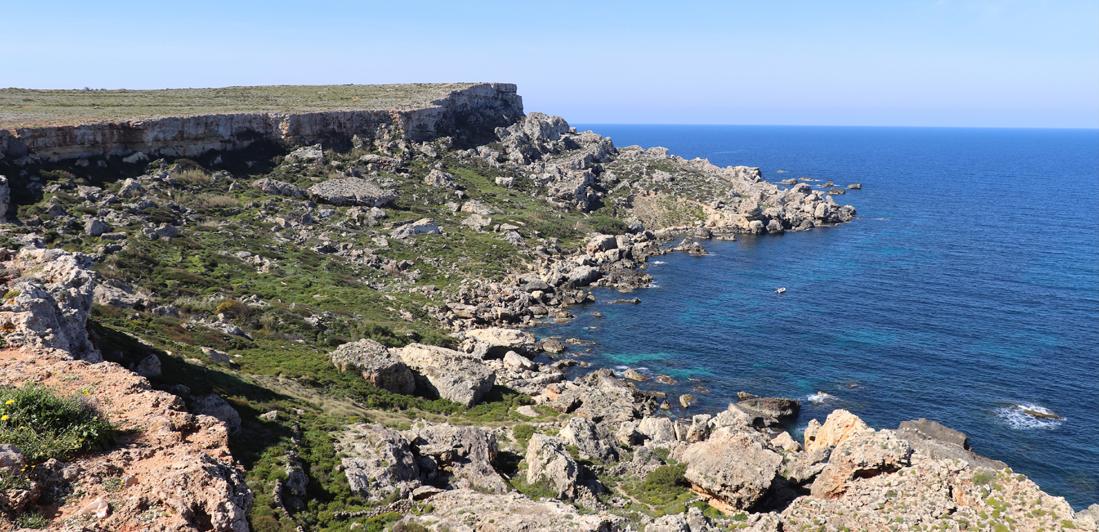


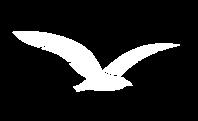
Celebrate birthdays, graduations, or family reunions or any occasions. BirdLife Malta offers exclusive Nature Celebration Packages to spend interesting time in Maltese nature reserves.

Family Reunion

Nature Reserve
Salina or Simar

Birthday Graduation
Choose your special event
Crafts
Which hand-made gift you want to create and take home? Many options from seed planting to T-shirt design!

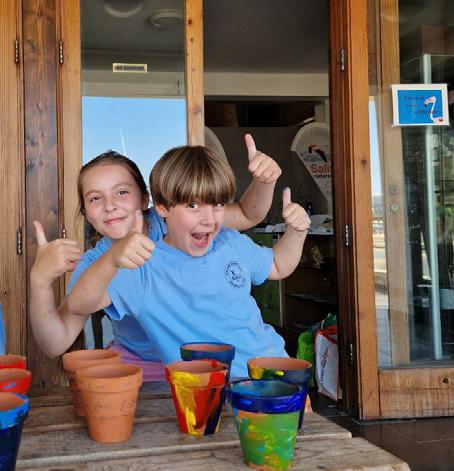


Treasure Hunt or Side Tour
Enjoy the well-deserved cake in the fresh air after!
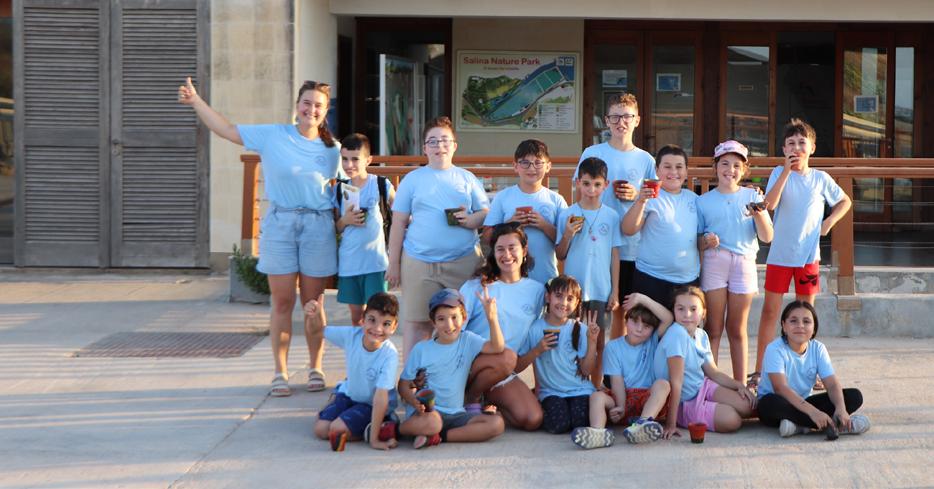

The Spotted Flycatcher, Muscicapa striata, is a small passerine that migrates in large numbers over the Maltese Islands. It spends winter in tropical Africa and returns to Europe to breed. It is a rather plain bird, with brownish grey upperparts, whitish underparts and a streaked head and breast (hence its name). It feeds on insects that it catches on the wing thanks to its excellent agility.
In Malta the Spotted Flycatcher was first recorded nesting in the 1970s. The population has since grown to up to around 50–60 pairs. They prefer areas with mature pine or cypress trees and do not mind human presence. Their main stronghold is Buskett but they also breed in public gardens and cemeteries.
Recent studies have shown that the Spotted Flycatchers breeding in a small area of the central Mediterranean are distinct from those that nest in continental Europe. These birds evolved distinct features, such as shorter wings, a browner appearance lacking streaks, and a high-pitched complex song. Some taxonomists consider this race a separate species: the Mediterranean Flycatcher Muscicapa tyrrhenica
Until very recently it was thought that the Mediterranean Flycatcher was only present in part of the Tyrrhenian coast of Tuscany and on Sardegna, Corsica and the Balearic Islands, but research by BirdLife Malta in collaboration with the Paris Natural History Museum has confirmed this race to be also nesting in Malta.


our breeding flycatchers are of the Mediterranean Flycatcher gene pool but also revealed the presence of a third genetic population previously only described from North Africa and Iberia. These different populations are possibly hybridising in Malta and creating a hybrid zone.
Geo-tagging, using GLS devices that record the position of the bird as it travels to Africa and back can also reveal differences between similar species in terms of where they go, the routes they take and the different strategies they adopt. In the case of local flycatchers, these devices have revealed that these birds travel to Angola and Namibia – that’s a 6000km journey one way!
Further studies will uncover more of the taxonomic complexities of this species. This knowledge will help us protect this bird and its habitat better and ensure that years of evolution are not lost due to loss of habitat and breeding areas.
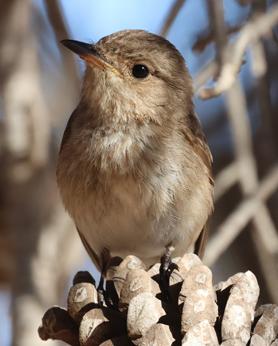
This ongoing research involves the observation of the local birds’ morphology (appearance), phenology (their timing of breeding and migration) and behaviour (song), ringing data, genetic sequencing (analysis of DNA and other genetic components) and geo-tagging. Blood and feather samples were taken by trained scientists from different breeding adults in Malta and analysed in Paris. Results not only showed that WORDS & PHOTOGRAPHS Nicholas Galea Head of BirdLife Malta Ringing Scheme
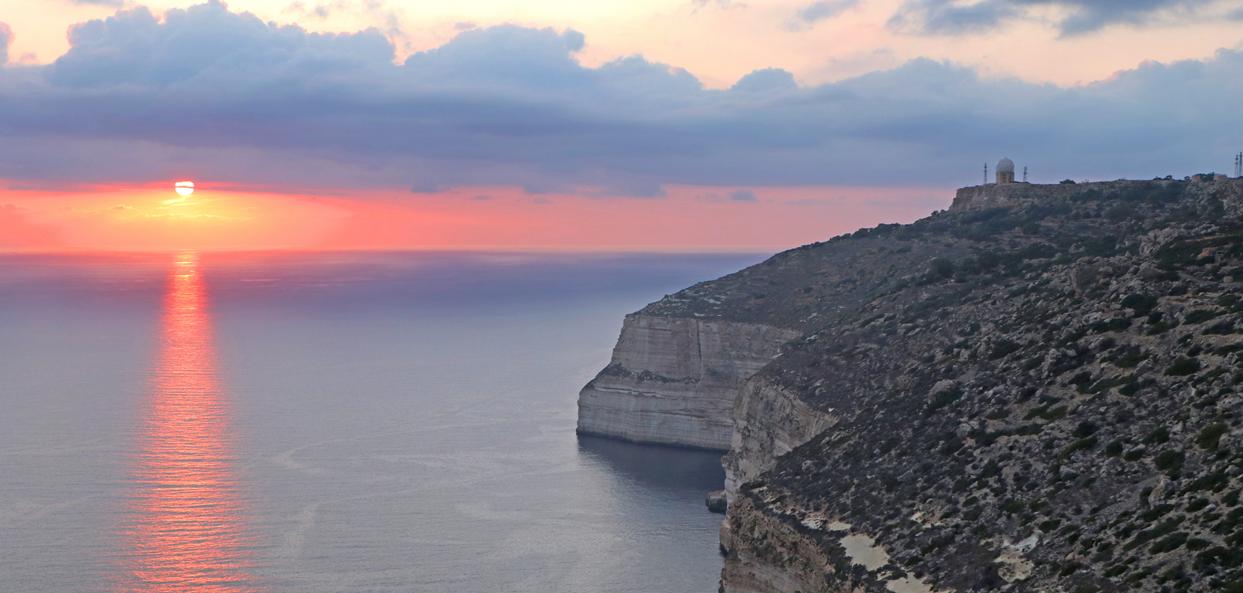
Despite the hustle and bustle that characterises most of our archipelago, there are still pockets where one can unwind and appreciate the beauty with which Mother Nature has enriched our islands. The mighty cliffs edging Ħad-Dingli and Fawwara surely qualify as one such place, offering majestic views and rich biodiversity to visitors. A quick stop by car might give a sense of what the area has to offer but exploring it on foot allows for a deeper experience of this relatively unspoilt stretch of the Maltese coast.
Our suggested route starts near the almost 400-year-old Maddalena Chapel, frequently referred to as ‘The Chapel on the Cliffs’, known in Maltese as il-Kappella tal-Irdum (point A), where the nearly 360-degree viewpoint should instil awe and trigger the appetite for more stunning views.
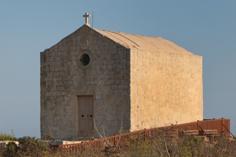
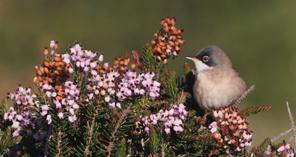

Before starting the trail, it is worth looking north to view Buskett from a perspective that might not be familiar with most people, but very familiar to the many migratory birds that fly inland along this part of the coast. Migratory birds range from the big and mighty to the tiny and discreet. During the autumn migration, this spot is ideal to observe birds of prey, especially in the evening as they seek a quiet place to roost. Regular visitors include Western Marsh-harrier, European Honey-buzzard,
Common Kestrel, Eleonora’s Falcon and Eurasian Hobby, as well as the European Bee-eater that fill the sky with colour and calls as they dart after flying insects, including harmful ones like the Oriental Hornet.
With the chapel at the back and the Aviation Radar on the right, one can admire the habitat spreading below the edge – a stretch of land sandwiched between the observer and a second line of cliffs with a sheer drop to the sea. This area is home to several breeding birds, including Malta’s national bird, the Blue Rock-thrush. Its neighbours include Peregrine Falcon, Yellowlegged Gull, Sardinian Warbler and Cetti’s Warbler. Further up in the garrigue breeds the Spectacled Warbler, which like all the other birds, takes advantage of the topography and rich floral biodiversity. Among the wild flowers flourishing in these habitats, some are endemic, such as Maltese Rock-centaury (our national flower), Maltese Fleabane and Maltese Salt-tree. Other plants present in the area include Olive-leaved Germander, Mediterranean Heath, Branched Asphodel and Mediterranean Thyme. The diverse insect population in the area also plays a crucial role in the survival of both bird and plant communities and is noteworthy in its own right.
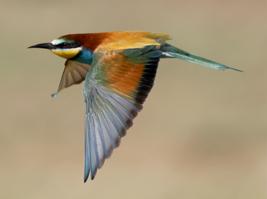




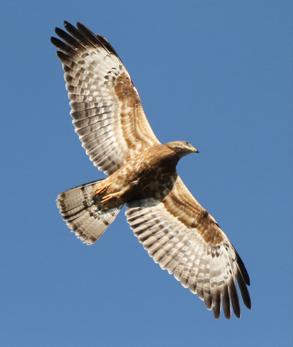

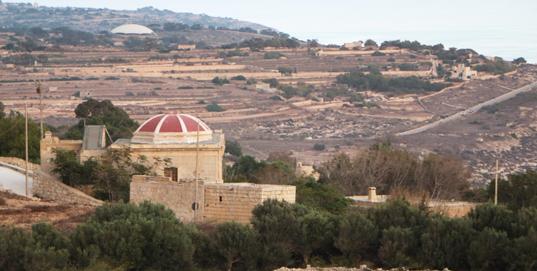
As you enjoy every step of the trail, be mindful of the cars passing by in Triq Panoramika, that leads to point B. Also, when venturing off the road, keep to paths and be careful when approaching the cliff edge. Head out towards Ġebel Ciantar (point C), whose location allows for stunning views, even of the islet of Filfla. We recommend continuing to Our Lady of Mount Carmel Chapel (Point D) for an immersive experience of the landscape. This section of the trail has an uneven surface and requires close supervision of any children and pets. Although
the Annunciation Chapel (Point E) marks the final stop on our suggested route, you may wish to explore further and discover more of this coastline. Our suggested route is about 3.5 km, and should take around 90 minutes for a roundtrip. Based on our experience, however, we recommend allowing at least double that time to fully appreciate all the area has to offer.
WORDS & PHOTOGRAPHS Aron Tanti Teacher and nature photographer


29 Jun 2024 The Mnarja feast is celebrated at Buskett. This year, BirdLife Malta youth group Falko organised their first event here: a clean-up and tour of the woodland. They met at the picnic area and spent half an hour cleaning the area, even making a competition who could collect most trash! Everyone was then given an educational book, and member Matthew Calleja gave an informative tour of the site and its wildlife.
12, 13, 14 Jul 2024 BirdLife Malta was again present at the Global BirdFair, the world's biggest wildlife event, held at Rutland (UK). Over the weekend we showcased our conservation and education work, with particular emphasis on our LIFE PanPuffinus! seabird project. We would like to thank AX Group for sponsoring BirdLife Malta’s participation in this year’s BirdFair.


6 Jul 2024 BirdLife Malta joined this year’s MFCC Malta Trade Fair, the biggest exhibit platform of the year. On 6 July BirdLife Malta was at the Malta Council for the Voluntary Sector, where visitors explored our latest courses and events, observed bird ringing, and received special gifts or purchased merchandise.
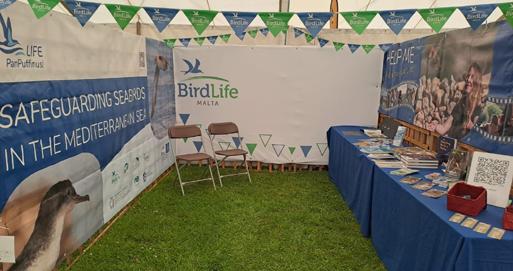
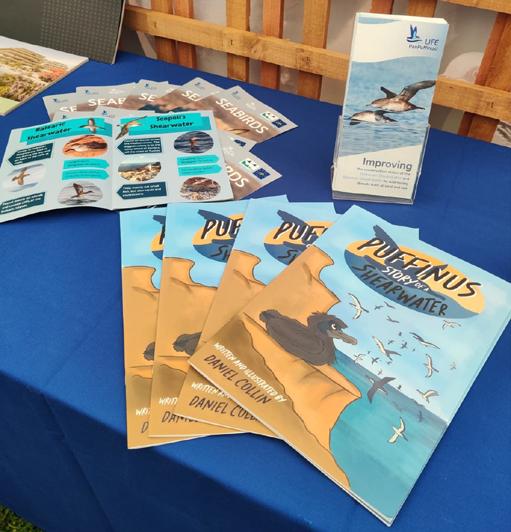


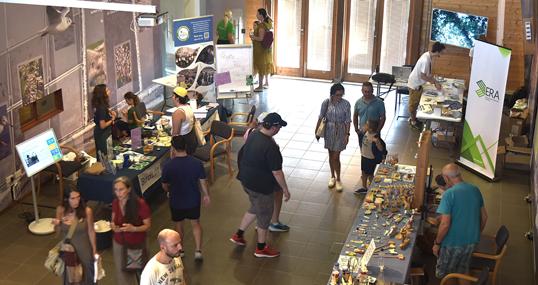
27, 28 July 2024 A historic day, in which we celebrated culture and tradition at the first ever Salt Fest, held at Salina nature reserve. On this day, the Salina Salt Museum was launched as part of a family-friendly event, with delicious food stalls, unique handmade crafts, and fun activity for all ages.
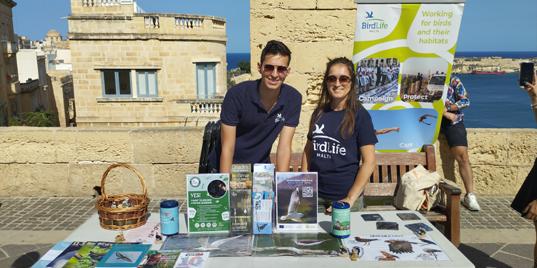
22 Sep 2024 BirdLife Malta participated in EcoMarket: Malta Climate Action Edition, where visitors learned about upcoming events, nature reserve schedules and current projects. At the Upper Barrakka Gardens, attendees also had the chance to buy BirdLife merchandise from our shop and become members.
27, 28 Jun; 5, 25, 26 Jul 2024 Another full season of shearwater boat trips, this year again hosted by the LIFE PanPuffinus! Team. BirdLife Malta organised five shearwater boat trips to the area near Gozo’s Ta' Ċenċ Cliffs, where 1000 pairs of Scopoli’s Shearwaters nest, the largest known colony in the Maltese Islands. People enjoyed the stunning cliff and sunset views, surrounded by shearwaters.

26 Sep 2024 LIFE PanPuffinus! project team is holding an exhibition at Majjistral Park focused on seabird conservation. The exhibition is open to the public Mon–Fri, 9am–3pm at the park’s Visitor Centre.

& 6 Oct 2024

8 & 10 Oct 2024 BirdLife Malta will take part in MCAST Freshers Week, welcoming new students and sharing opportunities to volunteer with our organisation. We aim to empower young people by discussing ways to amplify their voices in decision-making for nature protection. Visit our stand and learn about our initiatives and how to get involved. See you there!
Want to help us continue our work?
Join at http://bit.ly/joinBLM Donate at http://bit.ly/donate-to-birdlifemalta Support at http://bit.ly/Becomeasupporter Volunteer at http://bit.ly/volunteerwithBLM
Want to join an event?
Get more details at http://bit.ly/joinanevent or email events@birdlifemalta.org or call +356 2134 7645
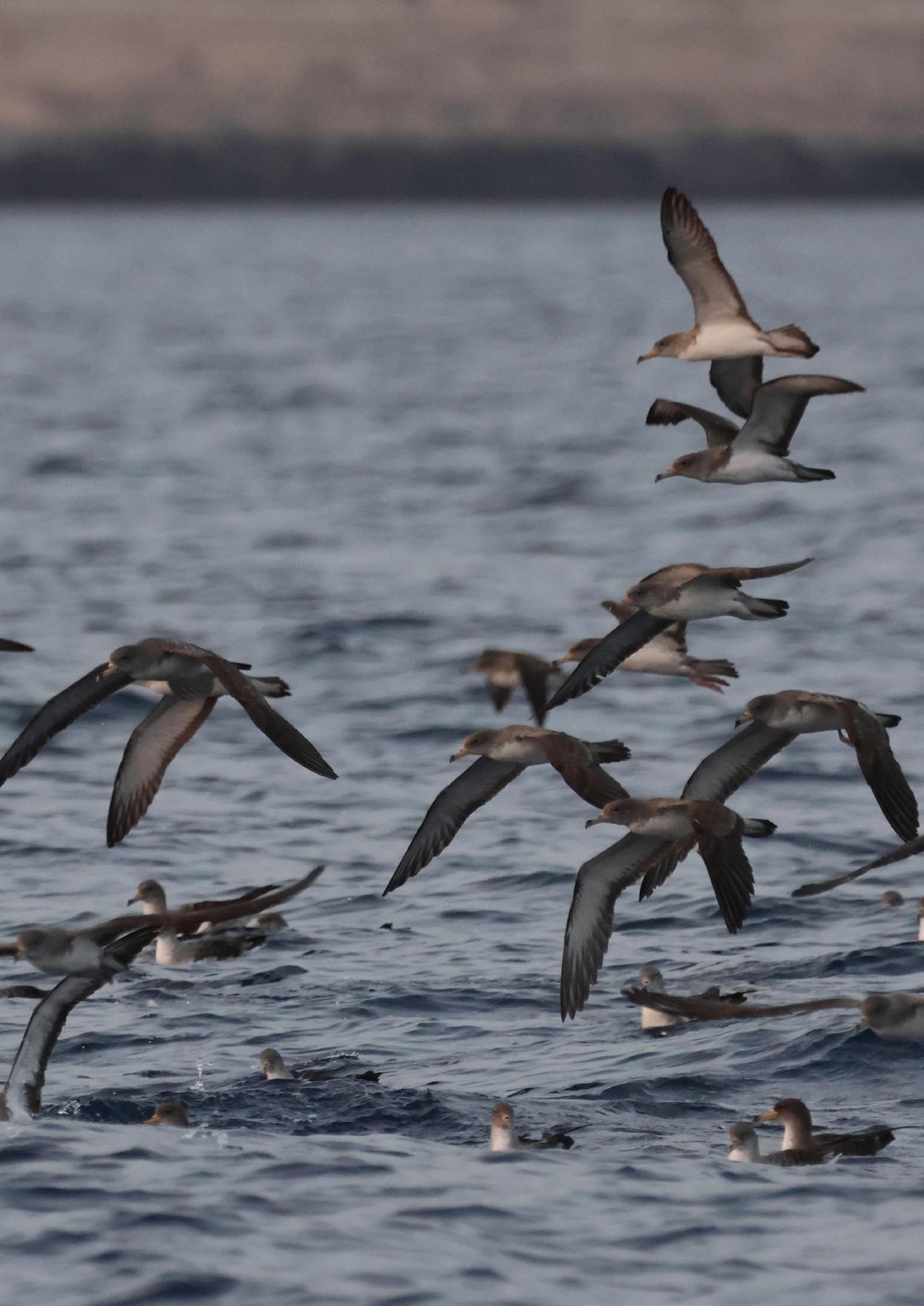
One of the most magical bird experiences you can have in Malta is without doubt to spend an evening with the shearwaters, and where best to do it if not close to their home! Our beloved ċiefa (Scopoli’s Shearwater) nests in colonies on sheer cliff faces. The largest colony of this bird in the Maltese Islands is in the majestic Ta’ Ċenċ cliffs in Gozo, where a thousand pairs make their nest. To add mystery to the magic, these seabirds visit their nest at dead of night, and communicate in the dark using this eerie wailing cry. No wonder BirdLife’s evening shearwater boat trips are so popular with members.